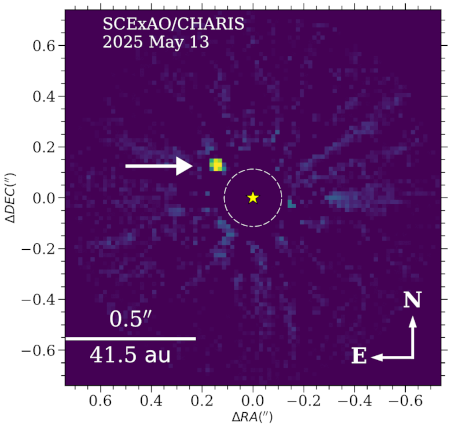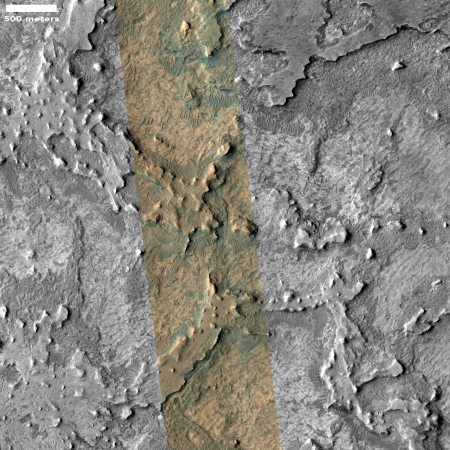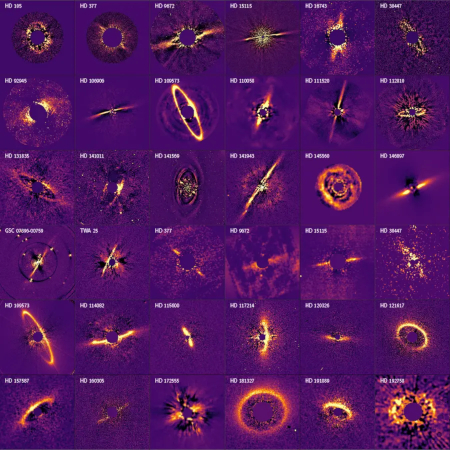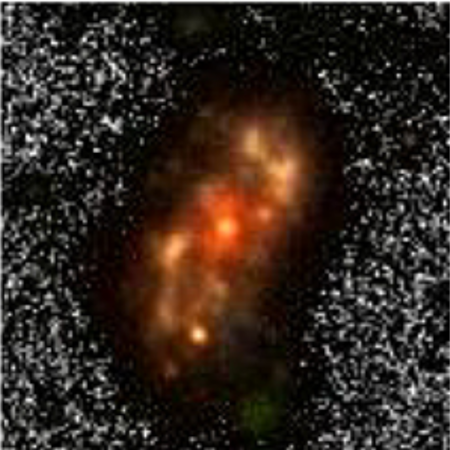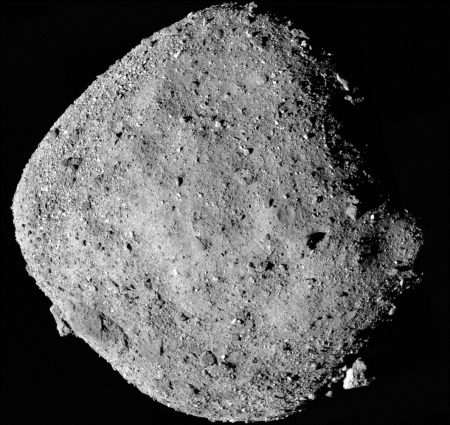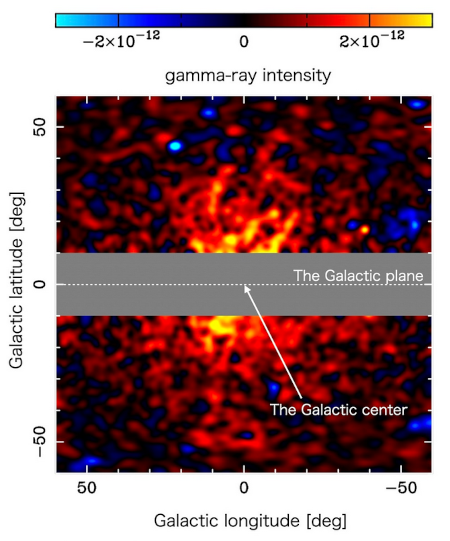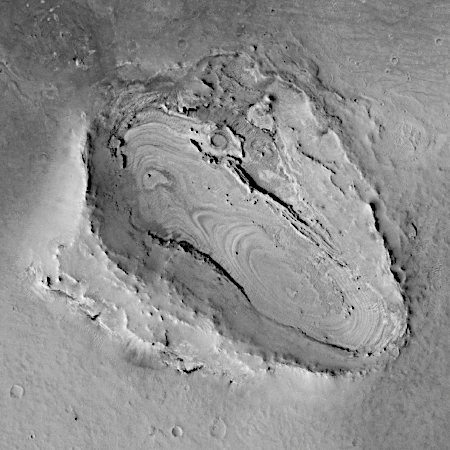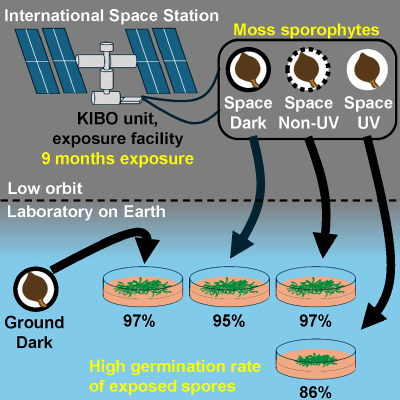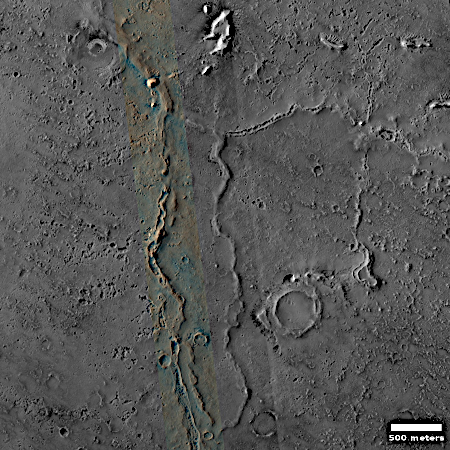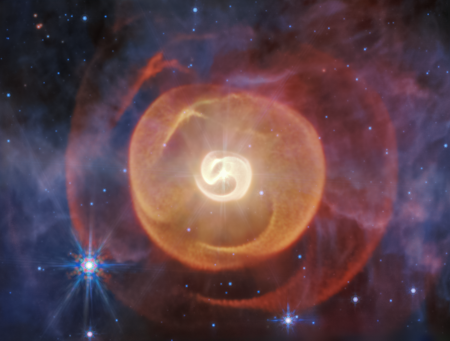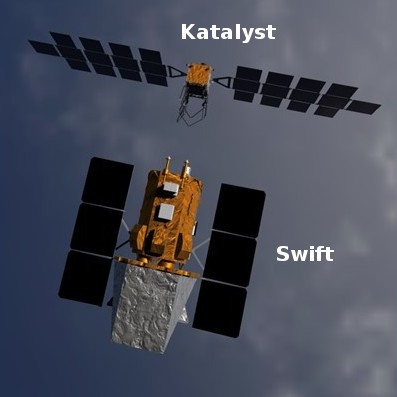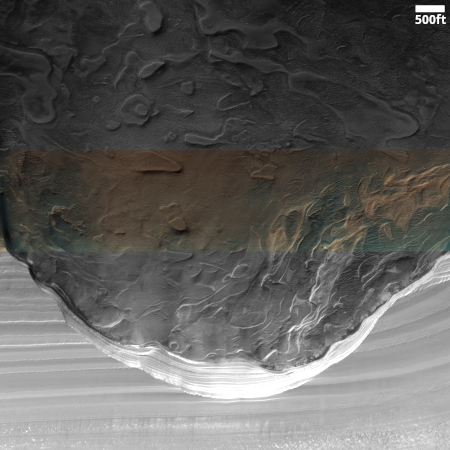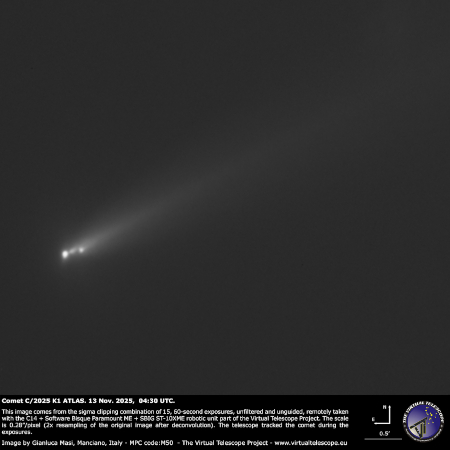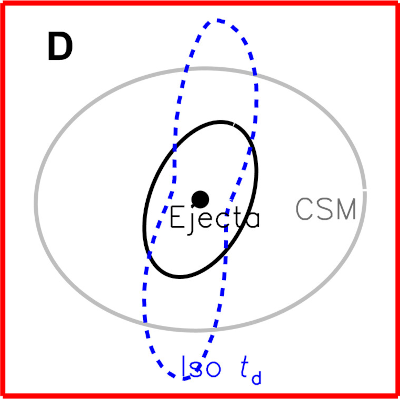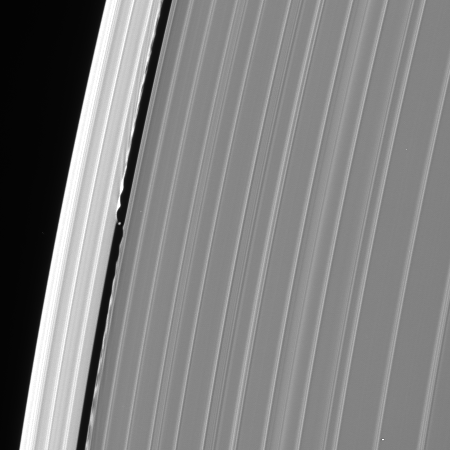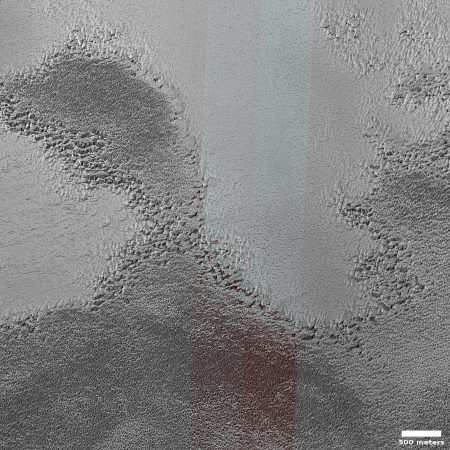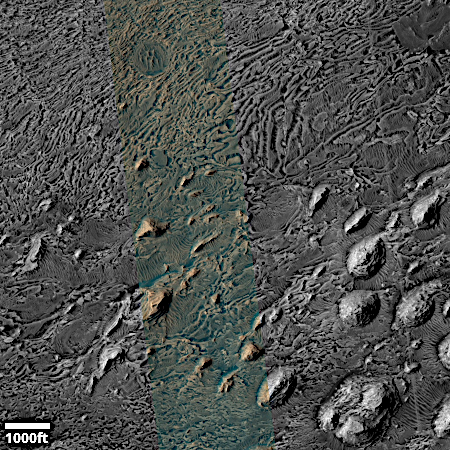Ground-based telescope actually photographs an exoplanet
Using a new instrument on the Subaru Telescope in Hawaii astronomers have not only discovered a massive exoplanet orbiting a star, they have been able to actually photograph the planet itself.
The arrow in the picture to the right shows that planet. That picture is a screen capture from a short movie complied from five observations taken over several months earlier this year, showing the planet as it orbited the star, the light of which is blocked out so as to not blind the camera. From the press release:
The newly discovered planet, HIP 54515 b, orbits a star 271 light-years away in the constellation Leo. With nearly 18 times Jupiter’s mass, it circles its star at about Neptune’s distance from our Sun. But the star and planet appear very close when seen from Earth; roughly the size that a baseball seen 100 km away would appear. The SCExAO system produced extremely sharp images allowing us to see the planet.
The astronomers also used this new instrument to image a brown dwarf star with a mass equivalent to sixty Jupiters about 169 light years away.
Using a new instrument on the Subaru Telescope in Hawaii astronomers have not only discovered a massive exoplanet orbiting a star, they have been able to actually photograph the planet itself.
The arrow in the picture to the right shows that planet. That picture is a screen capture from a short movie complied from five observations taken over several months earlier this year, showing the planet as it orbited the star, the light of which is blocked out so as to not blind the camera. From the press release:
The newly discovered planet, HIP 54515 b, orbits a star 271 light-years away in the constellation Leo. With nearly 18 times Jupiter’s mass, it circles its star at about Neptune’s distance from our Sun. But the star and planet appear very close when seen from Earth; roughly the size that a baseball seen 100 km away would appear. The SCExAO system produced extremely sharp images allowing us to see the planet.
The astronomers also used this new instrument to image a brown dwarf star with a mass equivalent to sixty Jupiters about 169 light years away.

